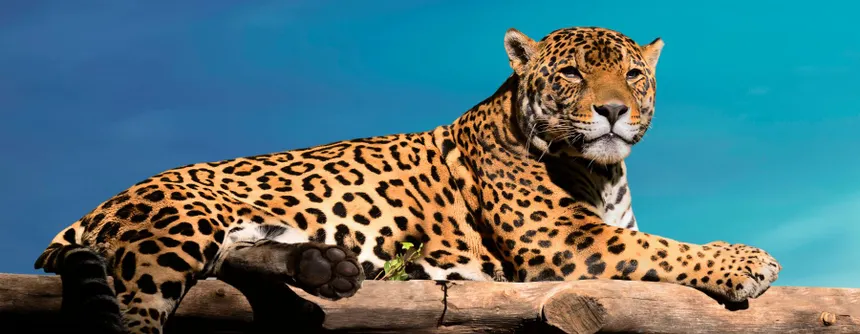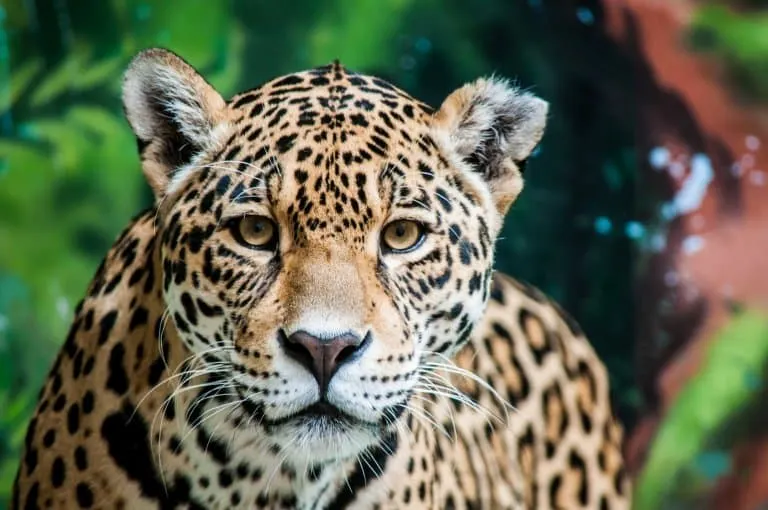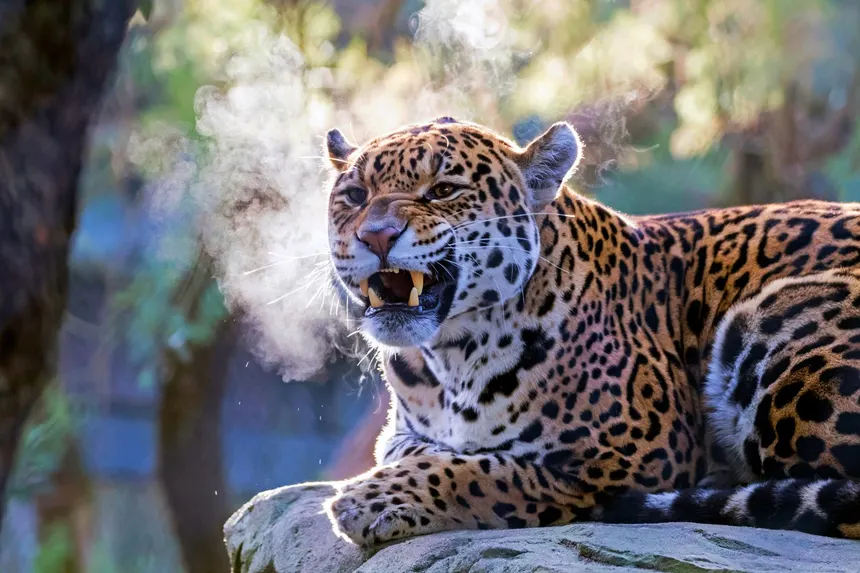10 Amazing Facts About The Jaguars

The jaguar (Panthera onca) is one of the most powerful and elusive big cats in the animal kingdom. Found primarily in the dense rainforests of Central and South America, this apex predator is revered for its strength, stealth, and majestic beauty. Despite being the third-largest big cat in the world, after the tiger and lion, the jaguar remains a mysterious figure, often hidden deep within the forests it dominates.
Here are 10 amazing facts that reveal the unique characteristics, behaviors, and ecological importance of this iconic feline.
1. 🐆 Jaguars Have the Strongest Bite of Any Big Cat
When it comes to bite force, jaguars reign supreme among big cats. Their powerful jaws are capable of delivering a bite force of around 1,500–2,000 psi (pounds per square inch). This allows them to pierce skulls and shells—a trait uncommon among cats. Unlike other big cats that go for the throat, jaguars often bite directly through the skull of their prey, killing instantly.
2. 🌎 They Are the Only Big Cats Native to the Americas
Jaguars are the largest cats in the Americas and the only extant species of the genus Panthera found in the Western Hemisphere. Their historical range once extended from the southwestern U.S. down to Argentina, though today, they are mostly found in the Amazon Basin and other remote tropical forests.
3. 🌳 They Are Masters of Stealth and Solitude
Jaguars are solitary and elusive creatures, preferring to roam the jungle alone except during mating season or when a mother is raising cubs. Their camouflage and silent movement through dense vegetation make them nearly invisible to both prey and humans. They often hunt by ambush, using stealth rather than speed.
4. 💧 Jaguars Love Water
Unlike many cats, jaguars are strong swimmers and are comfortable in aquatic environments. They are often found near rivers, lakes, and swamps, and they will hunt in water for fish, turtles, and even caimans. Their name is thought to derive from the Native American word yaguar, meaning “he who kills with one leap.”

5. 🐾 Their Rosette Patterns Are Unique
Each jaguar’s coat pattern—marked by rosettes (rose-shaped spots)—is as unique as a fingerprint. These rosettes often have a central black spot, distinguishing them from leopards. The beautiful golden-yellow coat helps jaguars blend into the dappled sunlight of forest floors, aiding in stealth.
6. 🖤 Some Jaguars Are Black (Melanistic)
Melanistic jaguars, also known as black panthers, are not a separate species. This dark coloration is caused by a genetic mutation that results in excess melanin. While their spots are still visible up close, they appear almost completely black from a distance. These jaguars are more common in dense rainforests, where dark coats offer an advantage.
7. 🐢 They Have a Diverse Diet
Jaguars are opportunistic carnivores and have one of the broadest diets among big cats. They hunt more than 85 species, including:
- Deer
- Capybaras
- Tapirs
- Birds
- Monkeys
- Reptiles like turtles and caimans
They are capable of cracking open turtle shells with their bite, showcasing their jaw strength again.
8. 🌿 Jaguars Are Top Predators and Ecosystem Regulators
As apex predators, jaguars play a crucial role in maintaining the balance of their ecosystems. By keeping herbivore populations in check, they prevent overgrazing and support the health of forest environments. The loss of jaguars in a region can cause ecological imbalance, demonstrating their environmental importance.
9. 🐣 Jaguars Have a Short Reproductive Cycle
Jaguars typically give birth to 1 to 4 cubs after a gestation period of around 90–110 days. The cubs are born blind and helpless, relying entirely on their mother for the first few months. They stay with her for up to two years, learning hunting and survival skills before venturing off on their own.
10. 🚨 Jaguars Are Threatened in the Wild
Despite their strength, jaguars face serious threats:
- Habitat loss due to deforestation
- Poaching for their beautiful pelts and body parts
- Human conflict with farmers and livestock
They are listed as “Near Threatened” by the IUCN Red List, with populations declining in many areas. Conservation efforts are underway, including wildlife corridors and protected areas, to preserve their habitat and support breeding populations.
📌 Quick Summary Table
| Feature | Details |
|---|---|
| Scientific Name | Panthera onca |
| Habitat | Tropical rainforests, wetlands, savannas |
| Range | Central & South America (mainly Amazon Basin) |
| Diet | Carnivorous—over 85 prey species |
| Bite Strength | Strongest among big cats |
| Conservation Status | Near Threatened (IUCN) |
| Unique Trait | Skull-crushing bite & love for water |

🐆 Final Thought
Jaguars are symbols of power, mystery, and wild beauty. Their role as apex predators makes them essential to the health of their ecosystems, while their stealth, intelligence, and striking appearance continue to fascinate humans worldwide. Protecting the jaguar means preserving the intricate balance of tropical biodiversity—and ensuring that this mysterious jungle cat continues to roam the forests of the Americas for generations to come.



